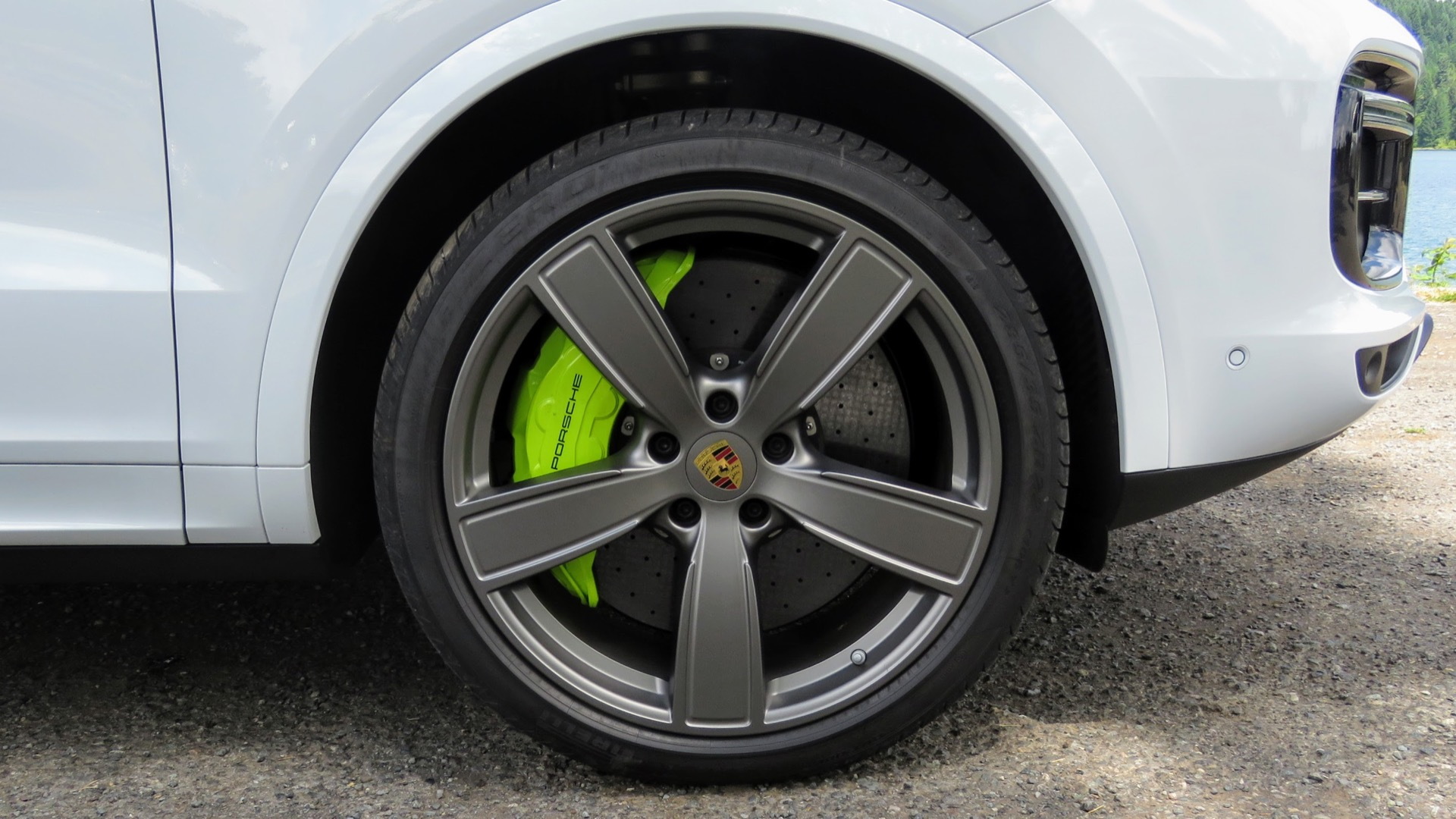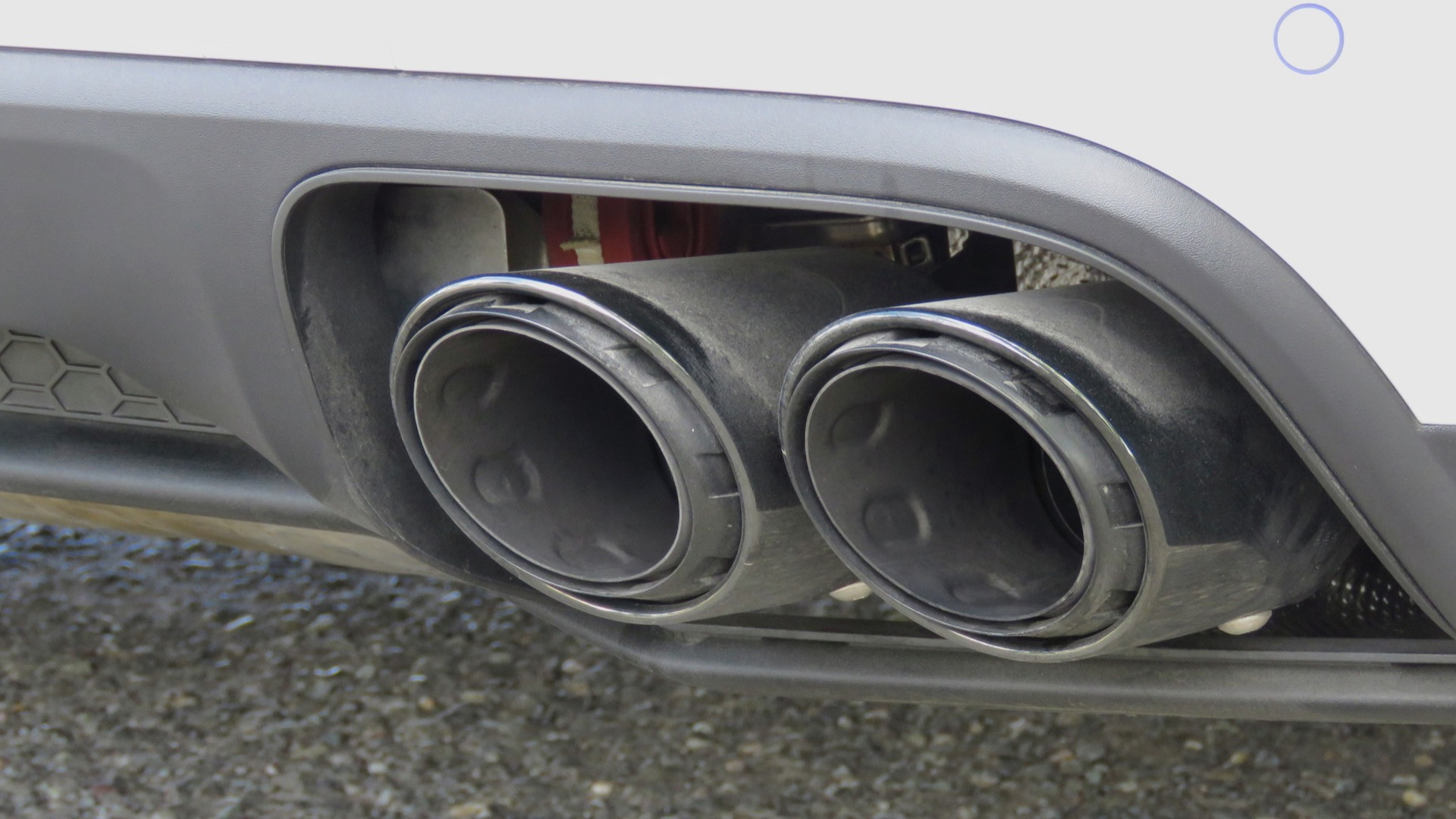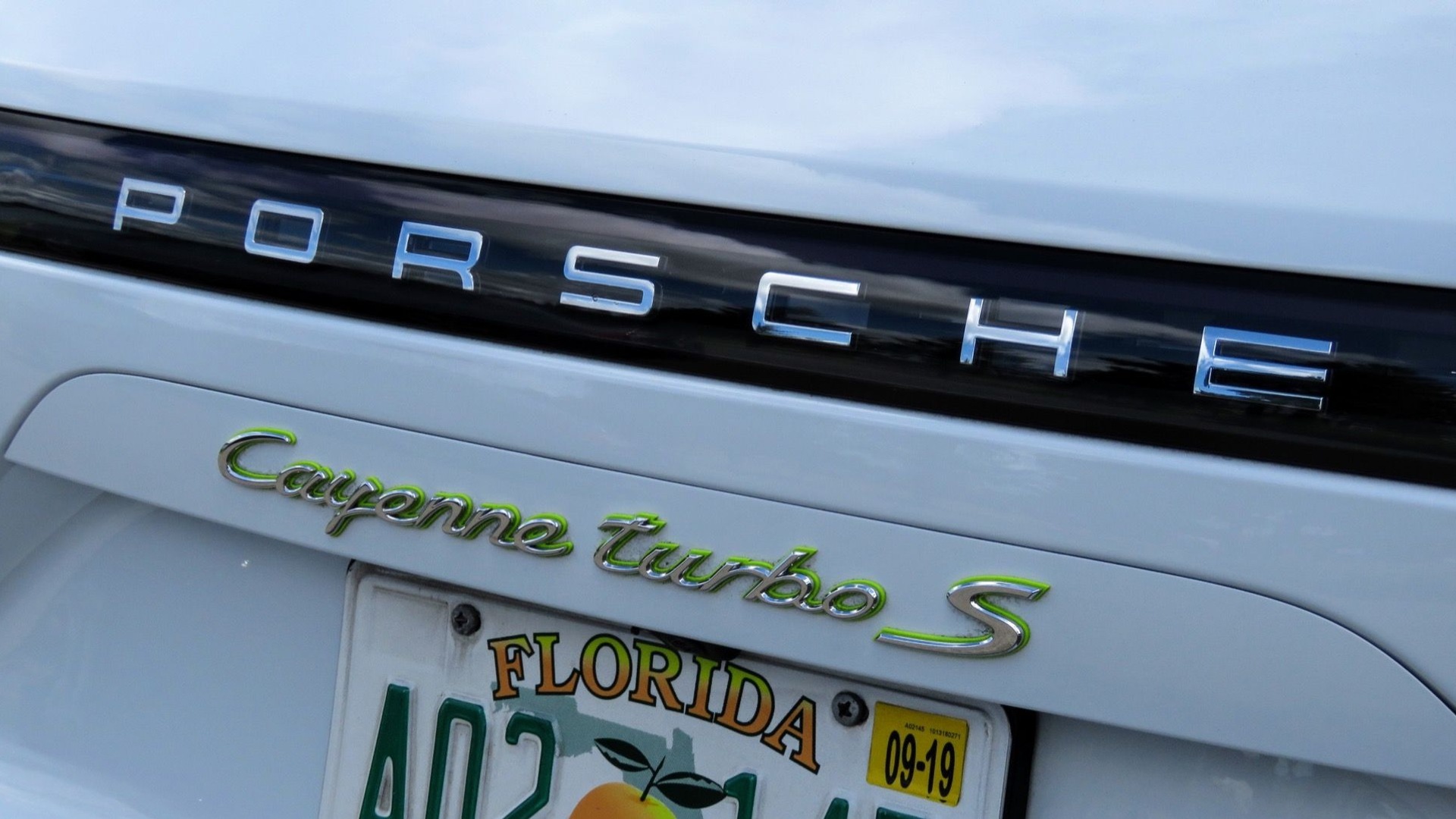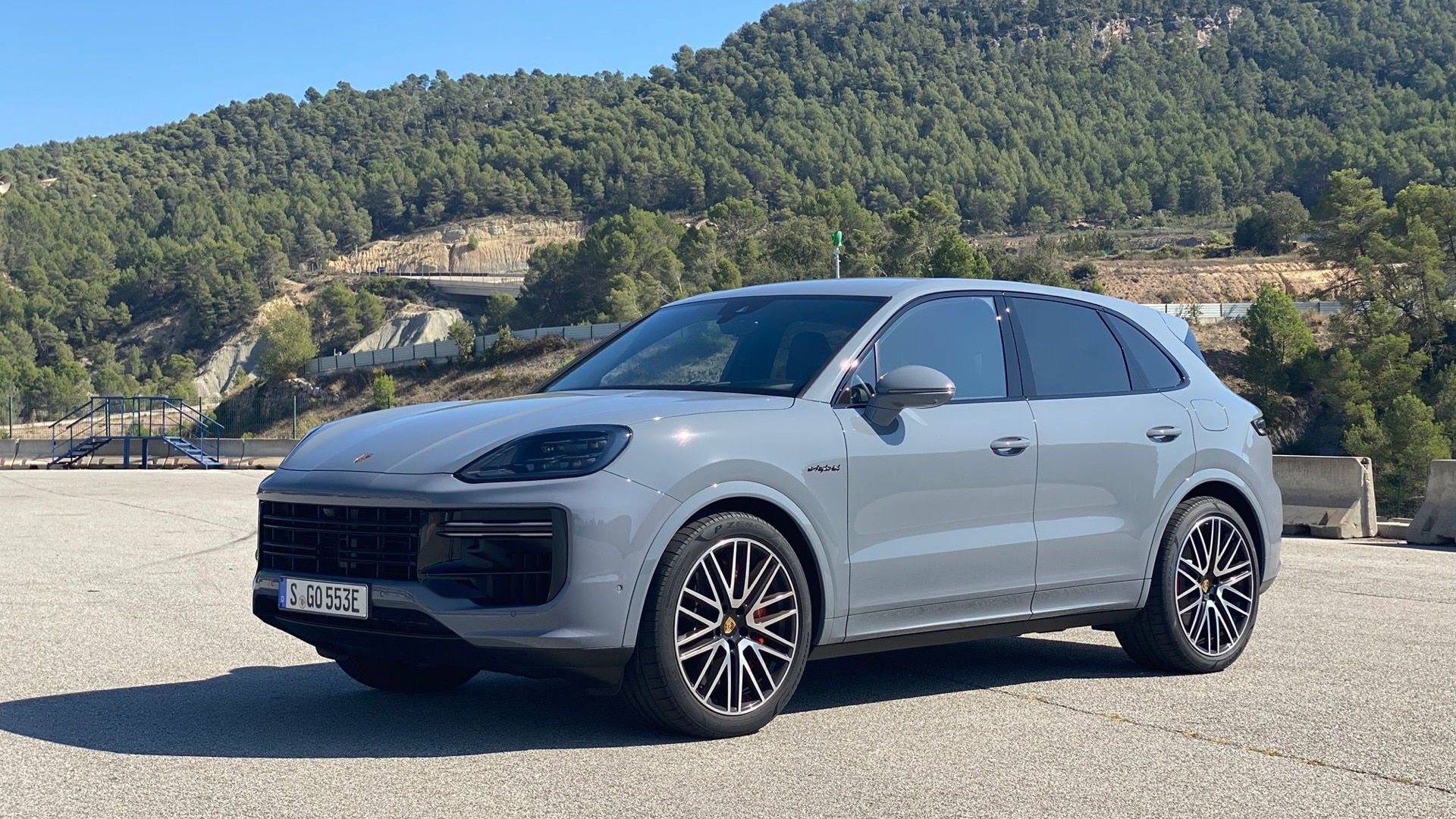The Porsche Cayenne I’d cozied into had bright-green brake calipers, hard-to-miss green e-hybrid badges along both sides, and a charging-port door just ahead of the driver’s door. I made sure that E-Power mode was selected as I breezed out of Eugene, Oregon, almost silently and virtuously free of tailpipe emissions.
A few miles down the road, a different side of this particular Cayenne beckoned—the one that involved the Turbo S badge on the tailgate, the twin-tipped dual exhaust, and the sticky low-profile staggered-width Pirelli P-Zero tires that weren’t exactly chosen for low rolling resistance.
Twisting the mode dial on the hub of the steering wheel past Hybrid Auto to Sport instantly brought the low thrum of a V-8 into the mix and moved the “electric machine” into an assist role.
That V-8 is essentially the 541-hp twin-turbo 4.0-liter V-8 from the Cayenne Turbo, paired here with the same upgraded hybrid system as in the Cayenne E-Hybrid. It sandwiches a higher-output 134-horsepower (100-kw), 295-pound-foot electric motor between the engine and 8-speed automatic transmission, and uses a larger 14.1-kwh battery pack that takes 2.4 hours to charge on a Level 2 AC charger.

2020 Porsche Cayenne Turbo S E-Hybrid
This, the 2020 Porsche Cayenne Turbo S E-Hybrid, is the quickest, fastest, and most-powerful SUV from the brand, ever. The net result is a total system output of 670 hp and 663 lb-ft of torque. That enables a 0-60 mph time of 3.6 seconds and a top speed of 183 mph, plus it has an all-electric driving range (not yet rated by the EPA) that we anticipate to be around 20 miles.
Porsche’s top-performance SUV and its best current hybrid?
It didn’t take much drive time with the Cayenne Turbo S E-Hybrid—a single non-U.S.-spec example that was to be shared between about a dozen eager journalists—to understand why the E-Hybrid badge is at its best here despite the dichotomy of the Turbo S badge.
As the curves tightened and the altitude climbed, I twisted the dial over to Sport Plus, causing the transmission to downshift and the V-8 (fitted with the available sport exhaust system) to gain a much louder, throatier growl. The timing proved perfect as moments later I entered a tunnel and savored the kind of crackling muscle-car-like overrun that’s surprising in a Porsche, let alone a hybrid.

2020 Porsche Cayenne Turbo S E-Hybrid
Both Sport and Sport Plus modes deliver a more aggressive calibration for chassis settings, steering boost, shift points, and other attributes. But in a move that Porsche says was inspired by its 918 hybrid supercar from earlier in the decade, engineers have saved some race-influenced settings for Sport Plus, where the key difference is that full boost and full regen from the motor system are delivered instantly and in full when you step on or release the accelerator.
At the center of the steering wheel-mounted mode dial is Porsche’sSport Response Button. When it’s pressed, the vehicle instantly delivers a 20-second shot of an even more aggressive calibration. The rationale is that if you’re in Hybrid Auto (or even E-Power), to maximize mileage or stay electric but need to quickly blast past another vehicle, you can quickly and temporarily get the sharpest settings without the hassle of switching modes.
In Sport Plus, or with the Sport Response button, the electric part of the equation is different, too. There, the system runs the electrics in an all-or-nothing mode, serving up all the boost or all the brake regen it can deliver with each press of the accelerator or tap of the brake pedal.
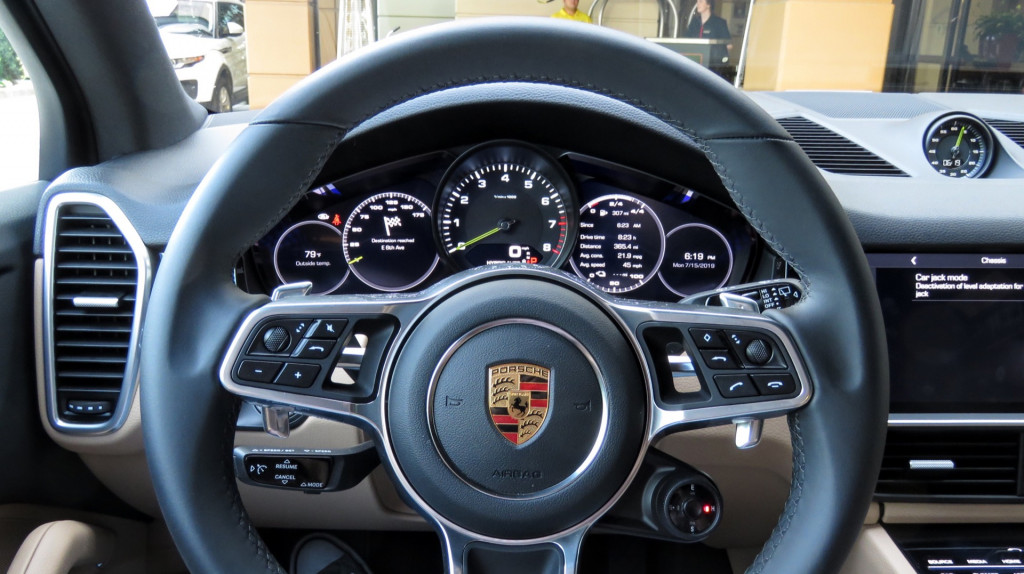
2019 Porsche Cayenne E-Hybrid first drive - Oregon, July 2019
One oversight with this flagship hybrid—and all of Porsche’s current hybrids—is that the steering-wheel paddles order downshifts and upshifts, but there isn’t much engine braking available from downshifts and the regenerative braking is largely controlled with the brake pedal. With the Taycan coming soon, it’s surprising that Porsche isn’t aiming for more synergy.
In all, I ended up sneaking in nearly 150 miles of driving in the Turbo S E-Hybrid. To take full advantage of the power and handling, I spent most of the time in in Sport and Sport Plus modes, where the powertrain keeps the battery at a 30-percent charge to allow long stretches of electric boost. However, Hybrid Auto mode performed well, too. In back-to-back driving with the standard E-Hybrid and both models in Hybrid Auto mode, I found low-speed city-driving transitions between the V-8 and electric operation to be smoother than the other model’s V-6.
Great drivability on the road, but ready for the track
Simply put, the Turbo S E-Hybrid has the best drivability of any Cayenne model. Low-speed responsiveness is particularly sharp, and full-throttle passes bring a split-second moment when you can feel a nudge of e-boost fill even as the transmission downshifts.
Steering loads up just right, and you get a much better sense of the g-forces (if not the road) compared to earlier Cayenne and Cayenne Hybrid versions. A great driving position that feels more buttoned-down to the Cayenne’s center of mass helps, too, as does the Porsche Dynamic Chassis Control (PDCC) electric roll stabilization system (which has its own separate 48-volt system).
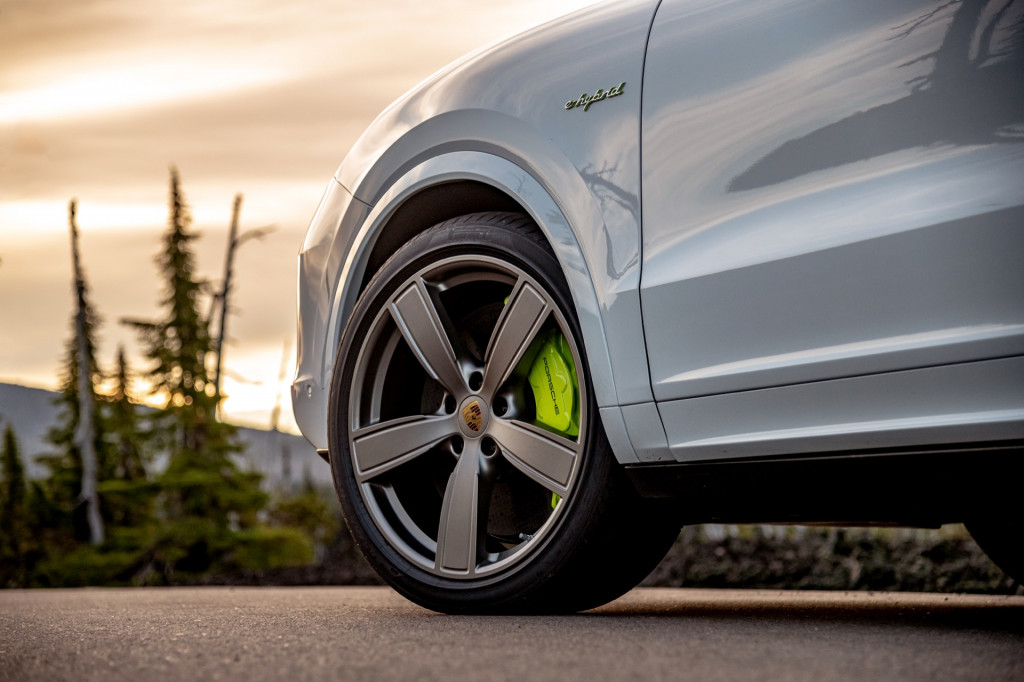
2020 Porsche Cayenne Turbo S E-Hybrid

2020 Porsche Cayenne Turbo S E-Hybrid

2020 Porsche Cayenne Turbo S E-Hybrid
The Turbo S E- Hybrid also uses a three-chamber air suspension that can be driver-controlled to allow up to 9.6 inches of ground clearance and drops automatically to its lowest setting of 6.3 inches at 131 mph—with normal ride height just over 7 inches.
The only thing that felt a little clumsy on the Turbo S E-Hybrid was the handoff between regenerative braking and the ceramic composite brakes, which are optional on other Cayennes but standard here. Ceramic brakes are notorious for their inconsistent feel when cold, so we’ll have to report back if and when we get them heated up in one of these on the track.
The starting price for the Turbo S E-Hybrid is $163,150 for the standard body style or $165,650 in Cayenne Coupe form. Overall, it’s a great cheerleader for what can be done with electric motors and hybrid technology. Between the raucous V-8, the silent around-town operation, and the modes that bring out the electric boost, it’s an exercise in contrasts—and for an affluent family, a stealth fighter.


